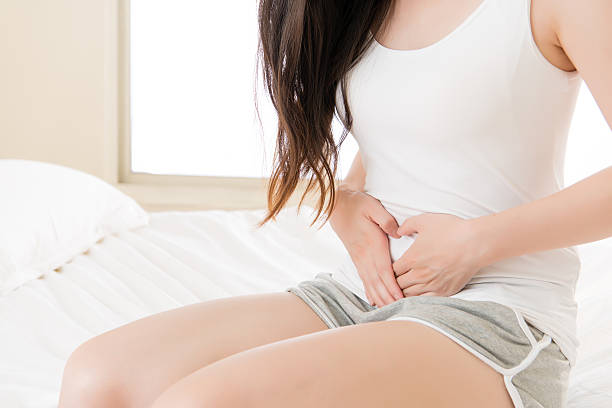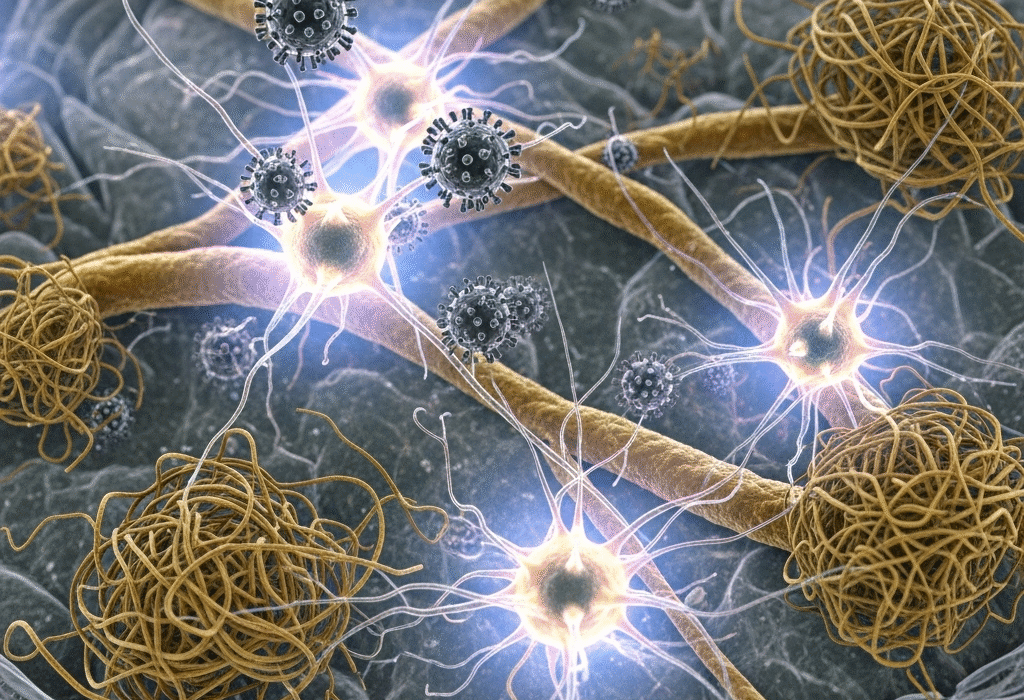At the crossroads of chemistry and human biology lies a world few people think about—but one that plays a crucial role in women’s health: vaginal pH. This unassuming term refers to the acidity or alkalinity of the vaginal environment, but don’t let its simplicity fool you. The pH level of the vagina is far more than a number on a scale. It’s an intricate biological balance that can affect everything from your menstrual cycle to your chances of getting an infection. Understanding vaginal pH is like gaining insight into the language your body speaks to keep itself healthy, fertile, and comfortable.
Although it’s rarely brought up in polite conversation, vaginal pH is something every woman deserves to know about. It holds the key to understanding a range of symptoms that may otherwise feel mysterious—like itching, odor, discharge, or even changes in your sex life. And once you grasp how vaginal pH works and what throws it off, you’re better equipped to take control of your intimate health. So let’s open the door to this essential topic, pull back the curtain on a remarkable inner world, and explore why vaginal pH really does matter.
What Exactly Is pH, and How Does It Apply to the Vagina?
To fully appreciate the role of pH in vaginal health, we need to take a brief tour into basic chemistry. The term “pH” stands for “potential of hydrogen” and is used to measure how acidic or alkaline a substance is. The pH scale ranges from 0 to 14. A pH of 7 is considered neutral—like pure water. Anything below 7 is acidic, while anything above 7 is alkaline.
Your stomach, for instance, is highly acidic, with a pH of around 1.5 to 3.5, which helps it break down food. Blood, on the other hand, is slightly alkaline, with a pH around 7.35 to 7.45. The vagina has its own unique requirements, typically sitting at a pH between 3.8 and 4.5. That’s moderately acidic—more acidic than your skin, and closer in range to something like black coffee.
But why the acidity? It turns out that this acidic environment is one of the vagina’s built-in defense mechanisms. It helps maintain a delicate balance of bacteria and prevents harmful microorganisms from gaining a foothold. Just like a coral reef thrives within a specific water temperature range, your vagina depends on its ideal pH to flourish.
Meet the Microbiome: Your Body’s Tiny Protectors
The vagina is home to a bustling community of microbes—mostly bacteria, with some fungi and viruses sprinkled in. This is known as the vaginal microbiome, and it’s as unique to you as your fingerprint. The most important residents in this ecosystem are a group of bacteria known as Lactobacilli. These bacteria are like the gatekeepers of the vaginal environment. They produce lactic acid, which lowers the pH and makes it hostile to invaders like yeast and pathogenic bacteria.
But Lactobacilli do more than just produce acid. They also generate hydrogen peroxide and bacteriocins, which are like natural antibiotics. These substances help prevent overgrowth of harmful microbes and support a healthy vaginal lining. When Lactobacilli are abundant and your vaginal pH is in its ideal range, you’re less likely to experience infections, irritation, or odor.
However, when this microbial balance is disrupted—whether by antibiotics, douching, unprotected sex, or hormonal shifts—the pH can rise, and Lactobacilli may dwindle. That’s when trouble often begins.
When the Balance Breaks: Signs Your Vaginal pH Is Off
Because the vaginal pH is such a finely tuned system, even minor changes can have noticeable effects. When the pH shifts upward toward a more alkaline environment (above 4.5), it creates conditions where harmful bacteria and yeast can thrive. This imbalance, known as dysbiosis, is often the root cause of some of the most common vaginal issues women experience.
One telltale sign of a pH imbalance is an unusual vaginal odor. Many women describe it as fishy, especially after intercourse or during menstruation. This odor is frequently associated with bacterial vaginosis (BV), a condition where harmful bacteria outnumber Lactobacilli. BV can also cause a thin, grayish discharge and mild irritation or itching.
Another sign of a disturbed pH is frequent yeast infections. While yeast (Candida albicans) is normally present in small amounts in the vagina, a more alkaline pH can allow it to multiply rapidly, leading to itching, thick white discharge, and redness.
Some women may also experience burning during urination, discomfort during sex, or chronic irritation that doesn’t seem to go away. These symptoms are often mistakenly attributed to poor hygiene, but in many cases, the root problem lies in the internal chemical environment—and pH is a major player.
Hormones, Life Stages, and the pH Connection
Vaginal pH isn’t static. It fluctuates throughout your life in response to changes in hormone levels. Estrogen, in particular, plays a huge role in maintaining vaginal acidity. It stimulates the production of glycogen in vaginal cells, which Lactobacilli then consume to produce lactic acid.
During puberty, rising estrogen levels trigger the development of a healthy, acidic vaginal pH. Throughout the reproductive years, estrogen helps keep this environment stable—unless it’s thrown off by external or internal factors. But during pregnancy, menopause, or when using hormonal contraceptives, the hormonal landscape shifts dramatically, and vaginal pH may follow suit.
In pregnancy, for instance, the vagina tends to become even more acidic, offering extra protection for both mother and fetus. After menopause, estrogen levels drop significantly, leading to reduced glycogen, fewer Lactobacilli, and a higher vaginal pH. This can result in thinning of the vaginal walls (a condition known as vaginal atrophy), dryness, and increased risk of infections.
Understanding how your hormonal milestones influence your vaginal pH is crucial for staying ahead of changes and maintaining comfort and health through each phase of life.
How Lifestyle Choices Influence Vaginal pH
It’s not just biology that shapes your vaginal environment—your everyday choices matter too. Certain behaviors and habits can support healthy pH, while others can sabotage it without you even realizing.
Using harsh soaps, vaginal sprays, or scented products may seem like they’re helping you stay “fresh,” but in reality, they often strip away the protective acidic layer and disrupt the microbiome. The vagina is self-cleaning and doesn’t need internal cleansing products like douches, which can push the pH toward alkalinity and wipe out good bacteria.
Sex can also alter vaginal pH. Semen is alkaline, so after intercourse—especially unprotected sex—the vaginal pH can temporarily rise. This usually isn’t a problem if the vaginal microbiome is healthy, but in women prone to infections, it can tip the scales. The same goes for lubricants: those that are not pH-balanced can disturb the natural acidity of the vagina.
Even your menstrual cycle can affect pH. Menstrual blood has a neutral to slightly alkaline pH, and when it lingers in the vagina—say, due to an extended period or infrequent tampon changes—it can raise the overall pH and make infections more likely.
What you eat can also play a role. Diets high in sugar can fuel yeast overgrowth, while diets rich in prebiotics and probiotics—like those found in yogurt, kefir, and fermented foods—can support a healthy microbial balance and, by extension, a stable vaginal pH.
Medical Conditions Linked to pH Imbalance
A disrupted vaginal pH is more than a minor inconvenience. It’s often a signal of deeper health concerns that need attention. Bacterial vaginosis, as mentioned earlier, is one of the most common vaginal infections and is closely linked to elevated pH. If left untreated, BV can increase the risk of pelvic inflammatory disease (PID), preterm birth, and even HIV transmission.
Urinary tract infections (UTIs) are also more likely to occur in women with chronic pH imbalances. While the vagina and urinary tract are separate systems, they are closely located and influence one another. When the vaginal environment is off-kilter, harmful bacteria like E. coli can travel more easily to the urethra and bladder.
Another condition associated with disrupted pH is trichomoniasis, a sexually transmitted infection caused by a parasite. It thrives in alkaline environments and often presents with frothy discharge, itching, and discomfort during urination or sex.
While vaginal pH testing isn’t a substitute for a full medical diagnosis, it can offer a valuable clue—especially for women who experience recurring symptoms. It’s like a smoke alarm that alerts you to a brewing fire.
Can You Test Your Vaginal pH at Home?
The answer is yes. At-home pH test kits are available over the counter and are easy to use. These kits typically include pH strips that change color based on the acidity of your vaginal secretions. You simply apply the strip to the vaginal wall, compare the color to a chart, and see where your pH falls on the spectrum.
These tests are especially useful for women who frequently experience unusual discharge or irritation and want to determine if an imbalance might be the cause. However, home testing shouldn’t replace a visit to your healthcare provider. It’s a helpful screening tool, not a definitive diagnosis.
If your pH is above 4.5 and you’re experiencing symptoms, it’s wise to consult a gynecologist. They can determine whether you have BV, a yeast infection, or another condition—and recommend appropriate treatment.
Restoring Balance: What You Can Do to Support Healthy pH
The good news is that your body wants to maintain a healthy pH—it just needs the right conditions to do so. Sometimes, restoring balance is as simple as making a few changes to your hygiene or sexual practices. Avoiding douching, choosing unscented products, and wearing breathable cotton underwear can go a long way in preserving your vaginal microbiome.
For some women, adding probiotics—either orally or vaginally—may help replenish Lactobacilli and restore acidity. These are especially useful after a course of antibiotics, which can wipe out good bacteria along with the bad.
Hydration, a balanced diet, regular check-ups, and being mindful of your body’s signals all contribute to keeping things in check. Paying attention to how your body feels and smells is not just normal—it’s necessary.
In more serious cases, such as recurrent BV or chronic yeast infections, prescription medication may be needed. In postmenopausal women, vaginal estrogen creams can help restore the tissue and support a more acidic environment.
The key is to see vaginal pH not as an isolated number, but as part of a larger, living system—one that reflects your overall health and responds to your environment.
The Empowerment of Understanding Your Body
Talking about vaginal pH might still feel taboo to some, but the more we understand about our bodies, the more empowered we become. Vaginal pH isn’t just a chemical curiosity—it’s a core part of reproductive health, sexual wellness, and quality of life. It connects to our hormones, our habits, our life stages, and our health history.
By tuning into the signals your body gives—be it through symptoms, sensations, or subtle changes—you gain the ability to act with clarity and confidence. Whether it’s choosing products that support rather than disrupt your microbiome or recognizing when something isn’t quite right, knowledge is a powerful form of self-care.
In a world where women’s health is often under-discussed or misunderstood, vaginal pH is one of those topics that deserves more spotlight. Not only because it’s scientifically fascinating, but because it’s deeply practical. When you understand vaginal pH, you’re not just learning chemistry—you’re learning your own story.






